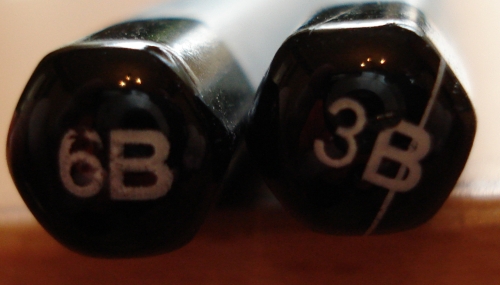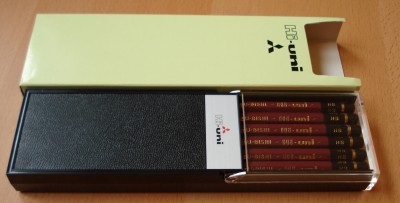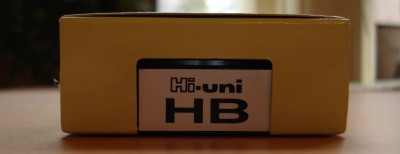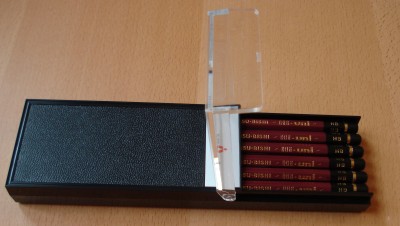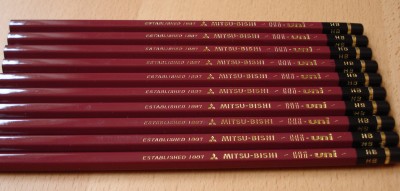Here are two small pencil design elements that I like.
Removable Barcode
The scannable barcode seems to have become a required retail practice. For small objects like pens and pencils, there seem to be two approaches – place them in a cardboard and plastic package with the barcode, or directly imprint them.
For a nice looking pencil, the retailer’s step forward is the purchaser’s step backward. A pencil just doesn’t need a barcode. For some, using this simple and useful writing implement is a step away from rampant digitization. In any case, I think classic pencil finishes like Faber-Castell’s forest green, Staedtler’s blue, and Towbow’s glosssy black have been diminished by the addition of barcodes.
There does seem to be an innovative workaround. Caran d’Ache places a small perforated plastic wrapper around the pencil’s tip. The wrapper has the scannable barcode imprinted. After purchase, you remove the small wrapper, and you have a clean looking pencil. Well done!

Grade on cap
The caps of pencils may have an eraser, be unfinished, or as with most premium pencils, be eraserless with a finished cap. For pencils that might be offered in many grades, I like the imprinting of the grade on the cap. It really makes it easy to find the right pencil for a task. Maybe it would detract from a high-end pencil, but it seems like a good idea based on the few I have seen.
